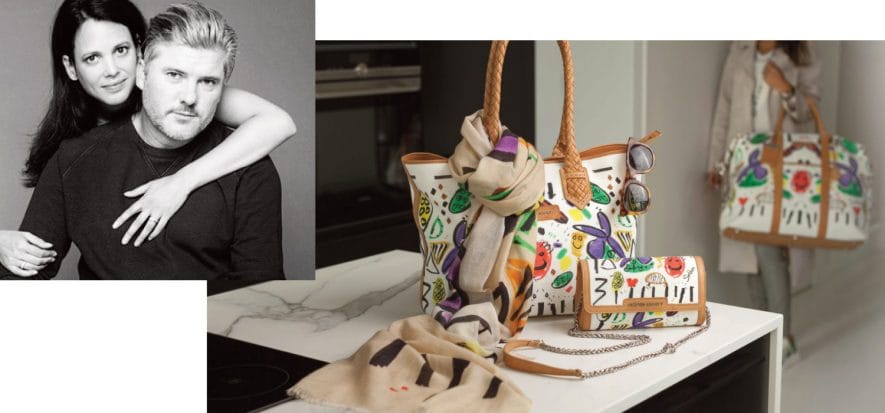“We are a socially responsible brand that offers artisan luxury products. We believe that a modern luxury brand should be transparent. Inclusive and accessible, not only to the society’s elite”. This is what can be read on Crafted Society website, a Dutch project with Italian traction (from leather to manufacturing). It was launched in 2015 by Martin Johnston (a former manager for big brands) and his wife, Lise Bonnet. This is our interview.
100% Italian artisans
Crafted Society sells accessories (including custom-made ones) exclusively manufactured by Italian artisans. Currently, they are around a hundred: 70% are from the Marche region, the remaining 30% is divided between Tuscany and Veneto. The Dutch company sells through its online flagship store and a fitting room/showroom in Amsterdam.
The luxury markup
“Luxury has a mark-up between 8 and 12 times the cost of the product. Too much. Our markup is 3 to 3.5 times”, explains Johnston. Crafted Society, since 2017, invests 1% of its turnover in a scholarship for young people who want to learn to be craftsmen.
The main goal
“When I thought of a new business together with my wife, we set ourselves a primary goal. The idea of presenting ourselves with a project that could change the artisans‘ life ” tells us Martin Johnston. “Crafts and production chains are threatened by the shadows in which they are kept”.
Levels of transparency
The first level of transparency of Crafted Society lies in selling accessories that bear the mark of the craftsman who made them. The second one is that not only all the artisans, but also all the suppliers in the production chain are listed on the company’s website. Including the Italian tanneries from which comes the leather. “So those who want can discover and understand what methods each tannery uses for leather processing”.
Business plan
“Our business – explains the Dutch entrepreneur – will grow significantly over the next 4 years”. Such as? “Thanks to online and retail investments with fitting room openings, both direct and indirect. But we don’t focus on turnover as the only measure of success. But rather, on how many Italian artisans (and in the future also from other countries, ed) we will succeed in bringing out. Our goal is to work with 1,000 artisans.
Production control
“How do we control production? We hired two experienced technicians. For footwear, Enrico Pesallaccia, managing director of Brand&Management (Marche). While for other leather accessories, Fernando Teodori (Marche) joined us. Furthermore, Lise and I come to Italy once every two months”, explains Johnston, creator of a project that was also able to “cash” the endorsement of the New York Times.
Italian tanneries, the best ones
Precise and transparent ideas also regarding the sustainability of leather. Johnston, in fact, explains that “we believe that if you intend to buy consumer goods, then it is better to buy quality rather than quantity. Better to buy accessories made of natural materials. Because they are durable. This already is “sustainability”. We love leather. We only use leather that is a by-product of the food industry. Our sustainability will grow thanks to the innovation of Italian tanneries. An innovation that is simply the best. Which means that we can continue to introduce more innovative and sustainable raw material options as we move forward”.










